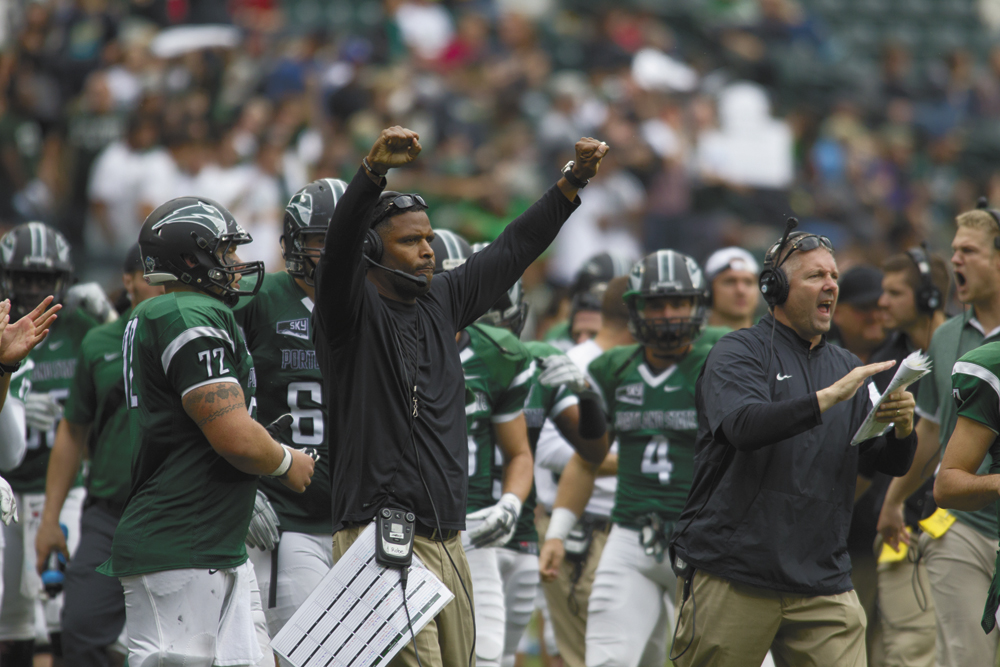ASPSU has launched a campaign to inform students of the dangers of former University of Oregon President Dave Frohnmayer’s suggestion to change the top three Oregon public universities to public corporations. Shouldn’t the students inform our representatives of our attitudes toward restructuring instead of being preached to?
The devil is in the details
ASPSU has launched a campaign to inform students of the dangers of former University of Oregon President Dave Frohnmayer’s suggestion to change the top three Oregon public universities to public corporations. Shouldn’t the students inform our representatives of our attitudes toward restructuring instead of being preached to?
ASPSU’s “Corporate Restructuring Factsheet,” posted on their Web site beneath a picture of Pauly Shore in a toga, is indeed full of facts—facts pulled straight from both the Frohnmayer Report and Portland State President Wim Wiewel’s white paper, and twisted to create mass hysteria. The rest of the “factsheet” is pure, uninformed, poorly written opinion.
One section urges students to spread the word to friends and professors because, “Most students and faculty are not aware of the restructuring plan and without that knowledge they can not be actively respond [sic] to the restructuring proposal.” At least they Googled another term for “plan.” I find it difficult to believe that anyone is left in the dark after the recent media blitz, especially faculty. ASPSU insults the entire student body and faculty with its demeaning rhetoric and conceit.
Not agreeing with every detail in Frohnmayer’s proposal, I am still not so blind that I don’t see the importance of the conversation the report has started. The Frohnmayer Report is simply a recommendation. Some ideas are very good, while others serve as a launch point for discussion.
The same goes for the principals addressed in Wiewel’s white paper. A white paper by its very definition is a preparation tool designed to provide a framework for future discussion and future lawmaking. Nothing is set in stone, contrary to what protestors on campus would have you believe.
I had an opportunity to sit down with Wiewel and his staff to discuss the restructuring and PSU’s future. The factsheet the president provided served to highlight a growing problem with funding for public universities. In the past 20 years, state funding for PSU has decreased from 48 percent of total revenue to 16 percent. And that money isn’t free either. It comes with strict rules governing tuition rates and faculty pay among other things.
“The key issue is funding,” Wiewel said. He hopes that his white paper will prompt a discussion that ultimately leads to change since, “keeping things as they are is wrong.”
ASPSU and other detractors of the public corporation model point to Oregon Health and Science University as a model of a failed public university turned public corporation. OHSU was featured prominently in Frohnmayer’s Report as a success story. Since switching to a public corporation in 1995, OHSU has increased federal and private grants, cured a form of leukemia and used the bond market to fund its growth. ASPSU correctly points out that it also has the highest tuition rate of any public medical school in the country, leaving most graduates heavily in debt. This is exactly the role student representatives should play in the discussion. Rather than inciting demonstrations and close-mindedness, they should participate in a mature discussion as advocates for individual students’ benefits.
I also spoke with Di Saunders, director of communications for the Oregon University System. She reiterated that the Frohnmayer Report is about talking and “spurring serious dialogue.” OUS Chancellor George Pernsteiner asked Frohnmayer to look at what other states are doing to fund their public universities.
“You have 50 states and 50 systems,” Saunders said. Frohnmayer’s job was to take that information and find what he believed was best for Oregon.
It seems that most officials are in agreement that flexibility, diverse forms of revenue and a quality education with appropriate tuition will be the most important aspects of the coming debate. They also don’t foresee any serious decision making happening until the 2011 legislative session. Until then, the matter is open to discussion as to whether the best option is Frohnmayer’s public corporation model, something more in line with Wiewel’s guidelines or a radically different solution.
The point is that for all of its perceived shortcomings and matters of contention, the Frohnmayer Report has achieved exactly what it was commissioned to do—jumpstart a discussion that will ultimately lead to a better future for higher education in Oregon. The details will fall into place as long as we all work towards the same established goals.



